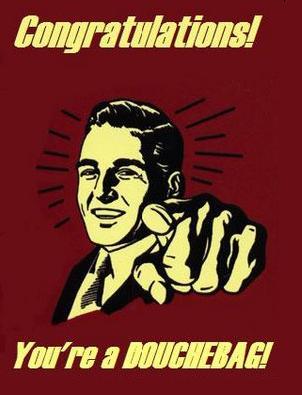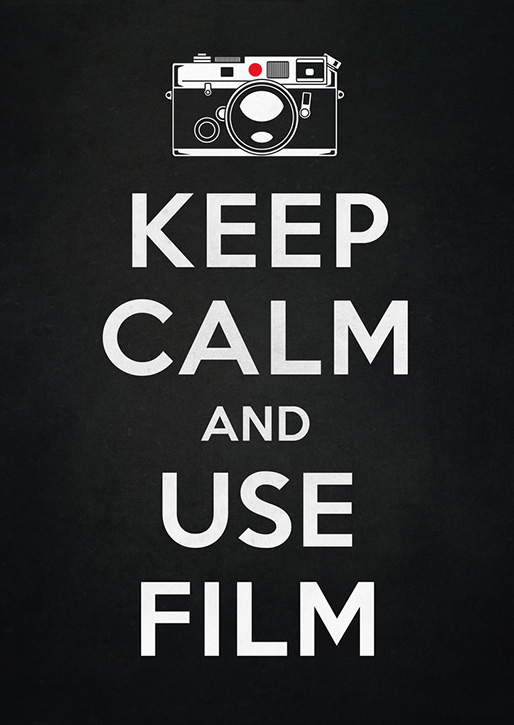I get emails on a pretty regular basis asking what sort of gear I use, the film I shoot, why I shoot it, what software I'm using, how I did this or that, et cetera. I try to include all relevant technical information when I post, but here it is, for the record, the entire process, painfully described and justified for all my loyal followers (all 4 of you). In the interest of transparency, this is my standard go-to-rig for most things, however it changes from time to time in terms of film, format, focal length and the like. However, this is the standard bag of gadgets I've always come back to, and it's what works for me. That said, I've seen people make amazing images with a shoe box and expired Polaroid film. Cameras are just tools. Anyone who says otherwise is selling you something. Deep breathe, this is gonna take a minute...
What's in the bag...
First and foremost, I shoot film. I don't own a proper digital camera aside from my phone. I do however teach a digital photography course, go ponder that one a minute. Why, you may ask? Am I one of those pretentious assholes that only shoots film and refuses to shoot digitally because I am a purist and a slave to my art or some other bullshit? The answer is, for 2 very specific reasons. One, I'm old, it's the way I learned, and it's the aesthetic I'm looking for. In my humble opinion the best way to get something to look like film is to actually SHOOT FILM. Two, I carried around 65 pounds of digital gear in college for a couple years and all it did was fuck up my back. I looked at what I was doing and hated it, and I believe a big part of that was because I was fighting with the gear. I absolutely do not care about custom white balance or 65 point matrix metering or the latest firmware, it means nothing. So I took all that digital stuff and traded it in for 35mm rangefinders...
Which brings us to the next pretentious asshole thing I do (there are a lot of them, I own a bunch of expensive fedoras too), and that is I shoot with old Leica rangefinders. The reason is simple. They work. FOREVER. I have an old Leica M3 from the late sixties that doesn't need batters and you can use it as a god damn hammer if you wanted and it would still take pictures. Period.
Who has GAS? (gear aquisition syndrome).
Typically I shoot with 3 bodies and 3 lenses. My two main rigs are a Leica M3 with a very well aged (ugly) Leitz 5cm/50mm f/1.5 (some people really hate on this lens, I love it, lots of character), and a Leica M2 with a relatively new-ish Zeiss 35mm f/2.0. The third body I typically carry is actually a Voigtlander Bessa R3m, with a 21mm f/4.0 lens. I picked up the Voigtlander to use with the 21mm because of it's small size and weight, as I like to keep that one around my neck most of the time. Like the Leica M3 and M2, it's functions are purely mechanical and doesn't require batteries.
Now, here is where the real gear head tool boxes will come out of the woodwork and say "why would you use inferior Zeiss or Voigtlander lenses" as oppose to Leica glass that is the "best in the world." The answer is two-fold. I don't have a trust fund to lay out five grand for a new 50mm, and what some may see as flawed I find quite interesting and desirable. "Perfect" is entirely boring. My 50mm has a wonderful softness wide open and is absolutely amazing for portraits. My 21mm is as sharp as it needs to be, doesn't distort much, and has a nice little vignette that I think helps keep the eye in the frame, especially with a lens that wide. And my Zeiss 35mm has amazing contrast and clarity, it's the perfect intermediate lens and is a great piece of glass for environmental portraits as well.
People often ask why rangefinders, why prime lenses, why no long glass...? First, rangefinders don't take zooms, so there's that. Second, rangefinders allow you to see what's going on outside of the lenses field of view. In other words, you can see what's coming, and that's great on the street. As for prime lenses... I shoot a lot of things from the hip, not looking through the finder at all, and that's difficult to do with zoom lenses. I know exactly what my 35mm or 21mm is going to see, I don't need to look through it. With a zoom lens on a crop sensor I have no idea what I'm getting unless I look through the finder. Primes are also typically faster (larger maximum f-stop), lighter, smaller and of a higher optical quality than a lot of zoom lenses. It's difficult to optimize a lens throughout the range of a zoom from say 18-85mm. As to wide lenses, closer is always better. The great Robert Cappa said "If your pictures aren't good enough, you aren't close enough." Incidentally, he stepped on a land mine while making pictures in Indochina. Regardless, working on the street at least, small compact cameras with short, wide lenses are far superior in my opinion. All you clowns out there carrying around your giant Canon 5D Mark III with a gaudy red strap that says Canon Digital on it in big white letters, and a ginormous 70-200mm L-Series lens, in white of course, you're a god damn target. Get a clue.
Aside from that, I don't keep much in the bag. I carry a small Sekonic L-398 light meter, completely analog, no batteries. For really low light situations sometimes I'll use an old Minolta Auto Meter IVF, but honestly I don't use the meters much these days, I just sort of guess. I carry orange filters to darken skies or pump contrast occasionally. I always carry a pen and notebook. Here's the point... I have a bag of small, quiet, inconspicuous cameras, with small, light, prime lenses. No batteries, no 400mm behemoth lenses, just simple, mechanical tools that do exactly what I need them to do and nothing more. I have a shutter speed dial, an aperture ring and the Sunny f/16 rule, what else do you need?
What's in the can...
I'm nothing if not a creature of habit. I've been shooting 3 or 4 types of film for over a decade now. For years my go to film was Kodak Tri-X 400, or as many have deemed it, "God's film." It's very versatile, has great tones, excellent sharpness, good contrast, and is incredibly forgiving. I still shoot it from time to time, but some years ago I switched, somewhat gradually, to Ilford HP-5+ 400. It started after Kodak was becoming less than reliable at keeping film stock on the shelves. I didn't want to get burned so I started testing alternatives. After awhile I just made the switch pretty much permanent. HP-5 400 has a lot of the same characteristics as Tri-X, though I've found it a bit sharper, and while the grain appears somewhat finer, it also has a "grittier" look than Tri-X grain does, at least to my eye. For slower film I've really grown to love Ilford FP-4 125. It's a wonderful portrait film, excellent in the studio and has beautiful skin tones.
The only developer I use these days is Adox Rodinal. It's incredibly strong stuff, has to be diluted way down, and it just pounds the shit out of the film, giving you high contrast and big grain, and is great for pushing film if you get in really low light situations. It also has a really long shelf life which is a huge plus since I don't shoot a ton of film. I don't send anything out, I hand develop everything myself in my home darkroom. I won't get into the print process, that's another stupid-long and involved post all together.
What's in the box...
I can't even begin to describe the utter sadness I feel in the depths of my soul when some instagram-happy dip shit emails me asking what filter I'm using or what Lightroom preset is my favorite. Even worse, when someone expresses interest in my work and then balks when they learn I achieve the "analog look" by actually shooting things on film. What's more, I don't even use Photoshop anymore...
I've used Apple computers and Adobe software since Photoshop 5.0, and continue to use both while teaching and doing classroom support at the university. But a few years back I just got fed up. Apple computers are stupid expensive, and add to that the cost of the Adobe software that I was using to a fraction of it's capability and none of it made sense... so when the G5 tower that I'd had since college (it was doubling as a space heater, you could fry an egg on it) finally took a crap, I decided to go a different route. Being a big fan of open source, I bought a Linux box from System76. It runs Ubuntu Linux and does everything I need at a fraction of the cost of a Mac. I use Vuescan to scan negatives on an Epson v500 flatbed. I use the Gimp (Gnu Image Manipulation Promgram) to minimally edit images for exposure and contrast. I'm not making huge scans, just enough for the web and to make an 8x10 digital proof occasionally, that's it. What you see is pretty much what comes out of the back of the camera.
Your moment of Zen...
Let's be honest, there are a thousand reasons to shoot digitally, but I don't find any of them all that compelling. The equipment I've come to use has allowed me to simplify my process, removing all unnecessary gadgets and technology from my workflow. It keeps me grounded. Besides I'm pretty bored with computers these days anyway, and absolutely sick to death of looking at images online. I want to see my photographs on the wall, 16x20 inches and framed. I want to hold prints in my hands. I want to pick up a book of work that someone took the time to make, collect, edit and publish. Anyway it's not about digital versus film, or brand loyalty or any of that, it's about the image. This is what works for me, for what it's worth.
And if you've made it this far... go outside and play, the computer is eating your brain.












 I've always tried not to get into the habit of publicly flogging people on the internet, it's just too easy. I also realize that this will probably fall on deaf ears for the most part... However, I thought this little gem in my inbox needed to be addressed... all names have been omitted to protect the guilty...
Hey Joseph,
I've always tried not to get into the habit of publicly flogging people on the internet, it's just too easy. I also realize that this will probably fall on deaf ears for the most part... However, I thought this little gem in my inbox needed to be addressed... all names have been omitted to protect the guilty...
Hey Joseph, Found...
Found...